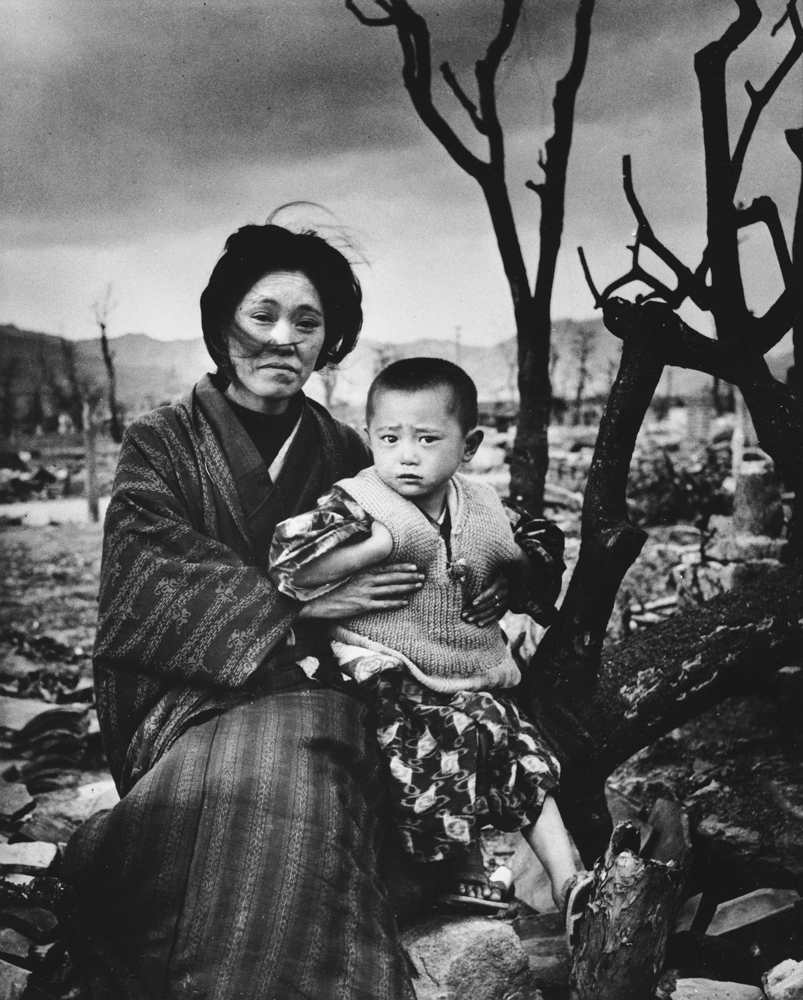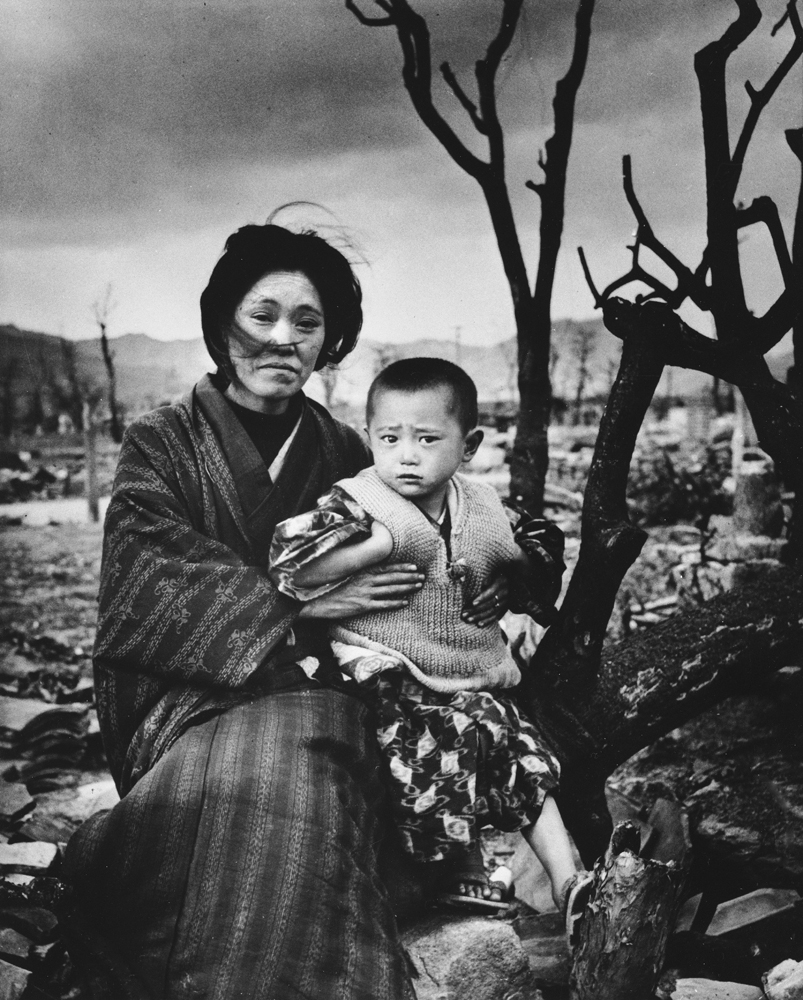
“Japanese doctors said that those who had been killed by the blast itself died instantly. But presently, according to these doctors, those who had suffered only small burns found their appetite failing, their hair falling out, their gums bleeding. They developed temperatures of 104, vomited blood, and died. . . . Last week the Japanese announced that the count of Hiroshima’s dead had risen to 125,000.” — From “What Ended the War,” LIFE magazine, Sept. 17, 1945
Four months after the American B-29 Superfortress Enola Gay dropped an atomic bomb on Hiroshima, Japan, on Aug. 6, 1945, killing roughly 70,000 men, women and children outright and dooming tens of thousands more to either a torturous recovery or a slow death by radiation poisoning, burns or other injuries and afflictions, Alfred Eisenstaedt made this portrait of a Japanese mother and her child amid the ruins of the city.
Beyond the eternal debate about the “morality” of the bombing of Hiroshima and, two days later, Nagasaki; beyond the political and scientific factors that led to the development of nuclear weapons in the first place; beyond the lingering shadow cast by the Atomic Age and the Cold War—beyond all of those considerations, Eisenstaedt’s picture quietly commands us, at the very least, to pay attention.
This is not a political or philosophical or ideological photograph. It is a portrait of two human beings in extremis. By the time Eisenstaedt took this picture, the Japanese were no longer, in any official sense, America’s enemy. Eight decades later, the U.S. and Japan are allies. Most of us can look at this mother and her child with eyes that only know of the Second World War and its aftermath from what we’ve read or seen in history books, novels, movies. The picture, in that sense, is not personal—even if it feels remarkably, and unsettlingly, immediate.
But for the questions that we read—or that we think we read—in their unblinking gaze, there are no ready answers. Even now, there are only more questions.
[See the gallery, “Hiroshima and Nagasaki: Photos From the Ruins”]
[See the gallery, “After Hiroshima: Portraits of Survivors”]

More Must-Reads from TIME
- Donald Trump Is TIME's 2024 Person of the Year
- Why We Chose Trump as Person of the Year
- Is Intermittent Fasting Good or Bad for You?
- The 100 Must-Read Books of 2024
- The 20 Best Christmas TV Episodes
- Column: If Optimism Feels Ridiculous Now, Try Hope
- The Future of Climate Action Is Trade Policy
- Merle Bombardieri Is Helping People Make the Baby Decision
Contact us at letters@time.com